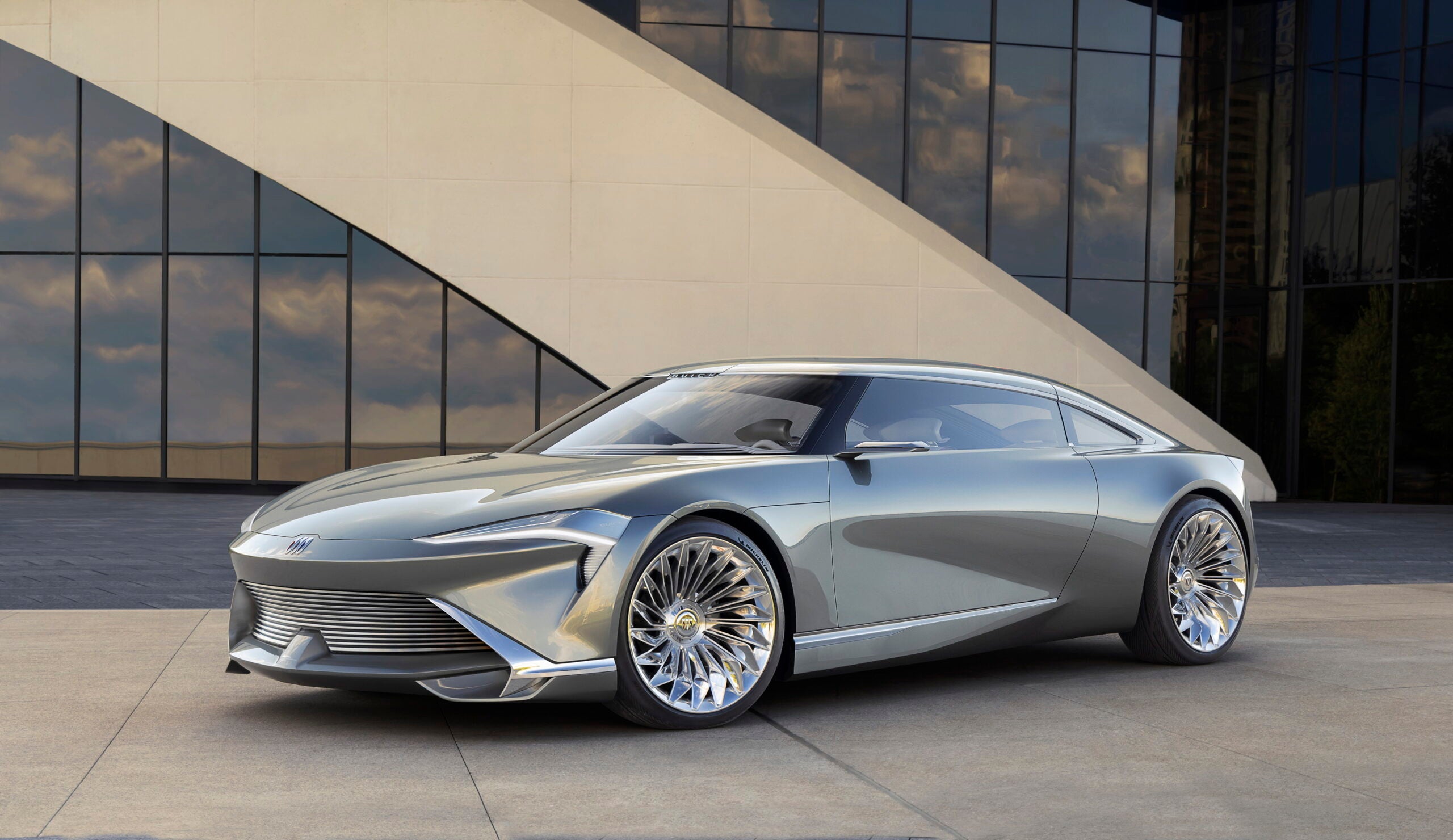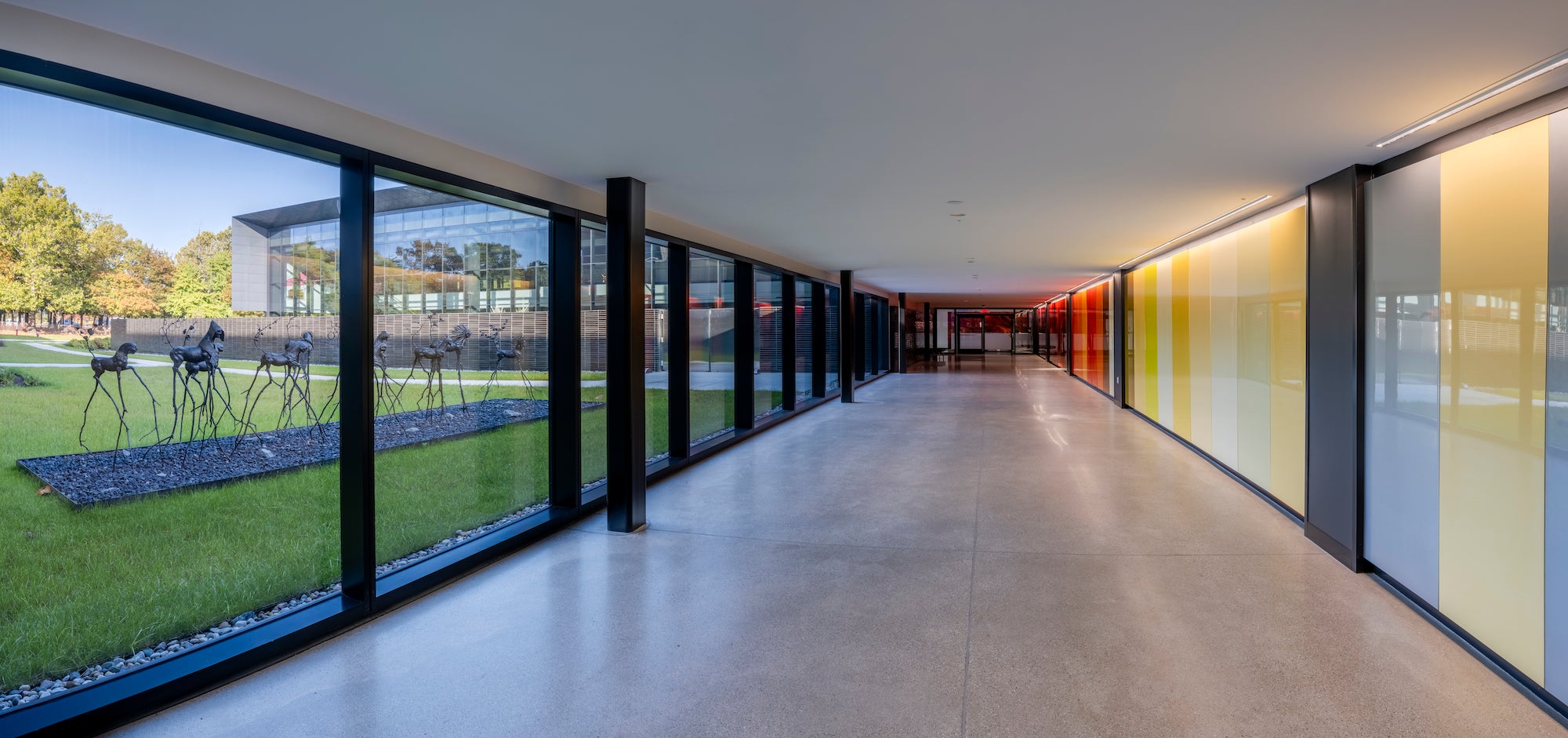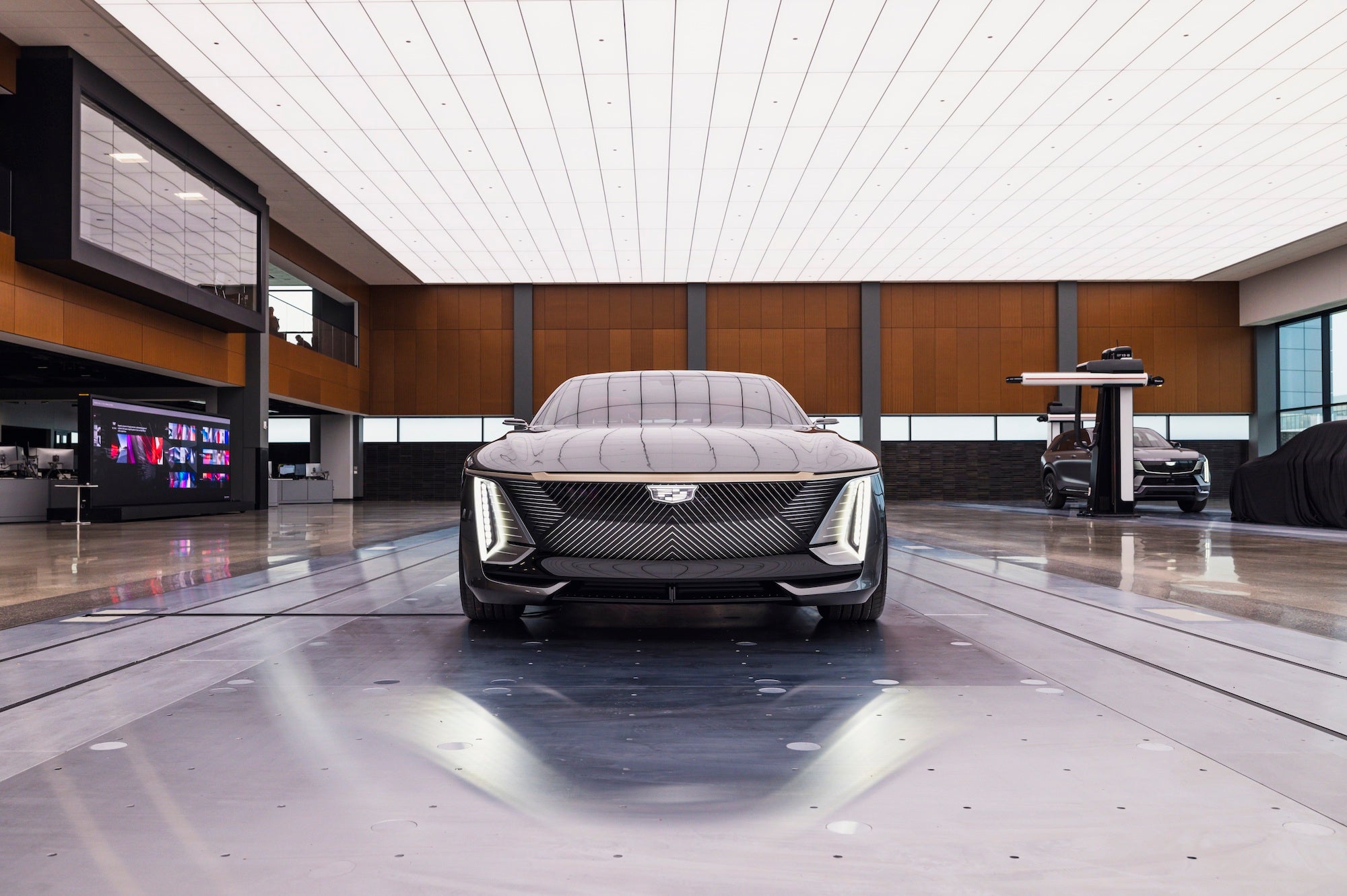On the floor of General Motors’ new Design West building, various concepts and work-in-progress next-generation vehicles dot the vast, open space. From a level above and behind glass, all is quiet. Everyone appears to be wearing soft-soled, comfortable shoes, as the place is huge and walking is required. It’s not until you step onto the cement floor that you hear a confluence of murmurs and sounds from hundreds of people all working toward the same goal: to propel the legacy automaker forward as quickly and efficiently as possible.
How do car designers peer eight to 10 years into the future to create vehicles that not only look good but will sell? In this building, GM creatives have moved into a new house, and the ideas are flowing. Here at the intersection of art, design, engineering, and technology, GM is flexing the vehicles the public already knows are coming, plus many more that very few people have seen. Except for those working in this building, of course.
It’s all part of a $2 billion upgrade to the Technical Center campus, a significant investment for this century-old automaking conglomerate. Already, the 2025 Buick Enclave three-row SUV was uncovered recently with a clear nod to the Buick Wildcat EV concept unveiled in 2022. Sleek and angular with aerodynamic lines that suggest speed, the Wildcat seems to be the audacious kind of model inspiring future ideas and encouraging a second look at what may have been a lackluster brand in the recent past.

Using every resource available
When the GM campus was first built in the Detroit area in 1956, arriving on site was like “driving into the future,” says a GM spokesperson during my recent tour. Today’s updates leap forward another generation while keeping tokens from the past. For example, in the new conference room that hangs over the portico, a Cadillac goddess sculpture sits on a piece of elm from a tree that had been cut to make way for this building. Sculpted wood wraps around the wall near the lobby, finely crafted by three generations of woodworkers employed by GM.
In the Design West facility, collaboration is easier than it was before, as design teams have better access to varied physical scenarios for quicker and more impactful design reviews, a GM spokesperson told me. The floor-to-ceiling windows enable more natural light, and vehicles can be more easily moved on to the courtyard for viewing outdoors.
The new Digital Design Visualization Center includes a full audio setup with capacity up to 120 decibels–basically, the noise level of a jet plane–and a nearly 56-foot-wide screen with more than 76 million pixels. Virtual tools are incorporated into each studio area to enable real-time, on-demand global design collaboration, and it seems the line between where the computers start and people stop (and vice versa) is fluid.
3D modeling still reigns
Forty-four high-tech mill sites dot the surface, standing ready to carve giant blocks of clay into the desired shapes before sculptors take over with specialized tools. These are five-axis mills, capable of cutting across three distinct linear axes. At the same time, it rotates on two vertical axes to process five sides in total. Sculptors learn the software to program the mills so the process is hand in glove.
GM hasn’t completely eschewed analog techniques for vehicle creation, however. Supremely talented artisans sculpt details into clay models after the mills have completed their part of the job.
“We’ve been predicting coming off clay models for a long time,” says GM Senior Vice President of Global Design Michael Simcoe. “But this is an art form. By using a physical model, you have a unique reaction in three dimensions; judging proportions and scale is difficult, virtually.”
Side by side with the all-clay models are those that are partly cloaked in Di-Noc, a stretchy film used for decades in the automotive industry for wraps and color representation. Massive company 3M acquired Di-Noc in the 1960s and still uses the name. Today, GM staff in the Design West building apply it to clay models to help designers see the reflection of light on the surface as it plays on the body of the car.
Tearing down the walls

There’s more space in the new building for show and tell, and you can bet each of the automakers–Cadillac, Chevrolet, Buick, and GM–are checking each other out. There’s a sense of peripheral inspiration over one-upmanship. Even those on the virtual modeling side are nearby under an overhang to manage the influx of light on their computer screens. If the old buildings were siloed and compartmentalized, this is the exact opposite. GM’s world is topsy turvy in the most logical, ambitious ways.
On top of the new building, refreshed technology, and updated machinery, there are about 40 art installations throughout Design West, all created by current and past GM designers, creatives, sculptors, and fabrication shop employees. There is a large collage stretching four yards or more made from fabric swatches of all colors from past and current models. A massive, heavy aluminum piece of wall art was painted with various finishes. Employees host art shows on a regular basis to showcase what the designers can do beyond industrial sketches.
I can’t tell you about everything I saw on that design floor. There’s quite a bit of which I’m sworn to secrecy; at least for now. But if Buick’s Wildcat EV concept is any indication of the daring direction GM is taking into the next decade, it looks like that billion-dollar investment will pay off in spades.

Update: The original version of this story stated GM spent $1 billion on the new facility, but a GM representative has said the investment is now $2 billion. The headline and story have been updated to reflect the correct number.





